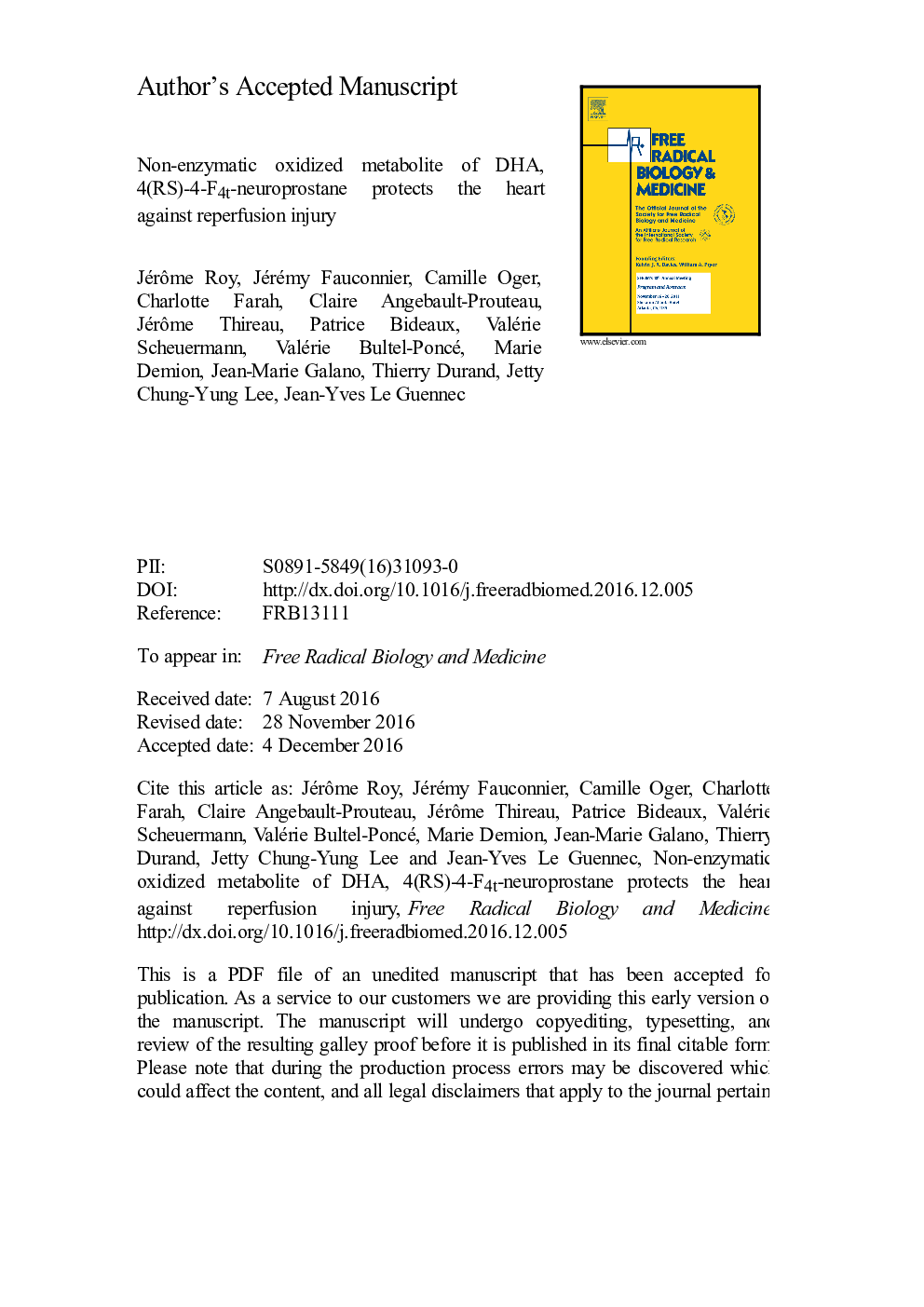| Article ID | Journal | Published Year | Pages | File Type |
|---|---|---|---|---|
| 5502002 | Free Radical Biology and Medicine | 2017 | 34 Pages |
Abstract
Using a rat model of ischemic-reperfusion (I/R), we showed that intra-cardiac infusion of 4-F4t-NeuroP significantly decreased infarct size following reperfusion (â27%) and also reduced ventricular arrhythmia score considerably during reperfusion (â41%). Most notably, 4-F4t-NeuroP decreased ventricular tachycardia and post-reperfusion lengthening of QT interval. The evaluation of the mitochondrial homeostasis indicates a limitation of mitochondrial swelling in response to Ca2+ by decreasing the mitochondrial permeability transition pore opening and increasing mitochondria membrane potential. On the other hand, mitochondrial respiration measured by oxygraphy, and mitochondrial ROS production measured with MitoSox red® were unchanged. We found decreased cytochrome c release and caspase 3 activity, indicating that 4-F4t-NeuroP prevented reperfusion damages and reduced apoptosis. In conclusion, 4-F4t-NeuroP derived from DHA was able to protect I/R cardiac injuries by regulating the mitochondrial homeostasis.
Keywords
EPANeuroprostanesCypDTMRMVESΔΨmFCCPMPTPRyR2Ca2+I/Rn-3 PUFAn-3 Polyunsaturated fatty acidsROSEicosapentaenoic aciddocosahexaenoic acidventricular extrasystolesECGelectrocardiogrammitochondrial permeability transition poreCSAischemia-reperfusionCardioprotectionDHASarcoplasmic reticulumCyclosporine Atetramethylrhodamine methyl esterMitochondriaMitochondrial membrane potentialcarbonyl cyanide 4-(trifluoromethoxy)phenylhydrazoneCalciumReactive oxygen species
Related Topics
Life Sciences
Biochemistry, Genetics and Molecular Biology
Ageing
Authors
Jérôme Roy, Jérémy Fauconnier, Camille Oger, Charlotte Farah, Claire Angebault-Prouteau, Jérôme Thireau, Patrice Bideaux, Valérie Scheuermann, Valérie Bultel-Poncé, Marie Demion, Jean-Marie Galano, Thierry Durand, Jetty Chung-Yung Lee,
